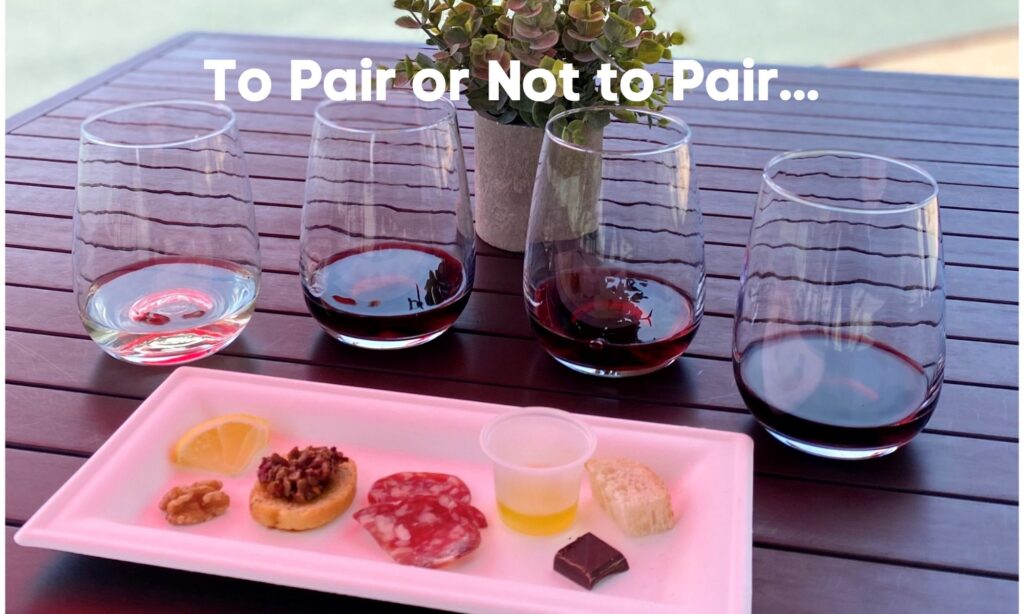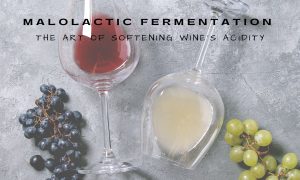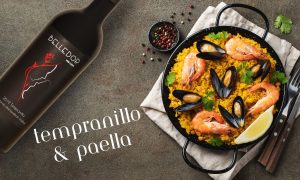Pairing wine with food is an art that can enhance the flavors of both the wine and the food. The key is to find the right balance between the characteristics of the wine and the flavors of the food. In this blog post, we will explore some of the basic principles of wine pairing and use examples to illustrate how different flavors interact with wine and answer the question “To Pair or Not to Pair…?”
Certain foods pair with certain wines because of how their flavors and characteristics interact with each other.
- Acid + Acid: Sauvignon Blanc paired with lemon
- Pairing acidic foods with acidic wines can create a pleasant balance. The high acidity in Sauvignon Blanc makes it a great match for lemon-based dishes like seafood or salads. The wine’s acidity can help cut through the sourness of the lemon, creating a harmonious balance of flavors.
- Bitter + Bitter = NO
- Harsh tannin wines paired with bitter flavors will leave a hostile, unpleasant taste so it is important avoid intensifying the bitterness. Harsh tannins in wine can create an unpleasant taste when paired with bitter foods like unsweetened cocoa powder or walnuts. This is a combination to avoid if you want to enjoy the taste of your wine and food.
- High Alcohol or Tannin + Fat
- Fat will cut through high alcohol or tannic wines, leaving behind a delicious taste profile with more fruitiness. Fat can help cut through the intensity of high alcohol or tannic wines, creating a more enjoyable tasting experience. This combination can also bring out the fruitiness of the wine, making it taste more fruit forward.
- What Grows Together Goes Together
- Pairing wines with foods from the same region can create a harmonious experience. For example, Barbera wine pairs well with Italian foods like tomatoes, garlic, and basil. These ingredients are commonly found in Italian cuisine, and they have a natural affinity with the flavors and characteristics of Barbera wine.
- Wine & Dessert
- When pairing wine with desserts, it is important to choose a wine that is sweeter than the dessert. This helps to create a balance of flavors and prevent the wine from tasting sour or bitter. For example, a sweet dessert like chocolate cake can be paired with a sweet wine like Port.
- Flavor Examples:
- Acid: Lemon
- Bitter: Unsweetened cocoa
- Fat: Salami/Olive oil
In conclusion, wine pairing is all about finding the right balance between the flavors and characteristics of the wine and the food. By understanding the basic principles of wine pairing and using flavor examples, you can create a harmonious tasting experience that will enhance the flavors of both the wine and the food. However, it is important to note that wine pairing is not an exact science, and personal taste preferences can play a big role in determining what pairs well together.














